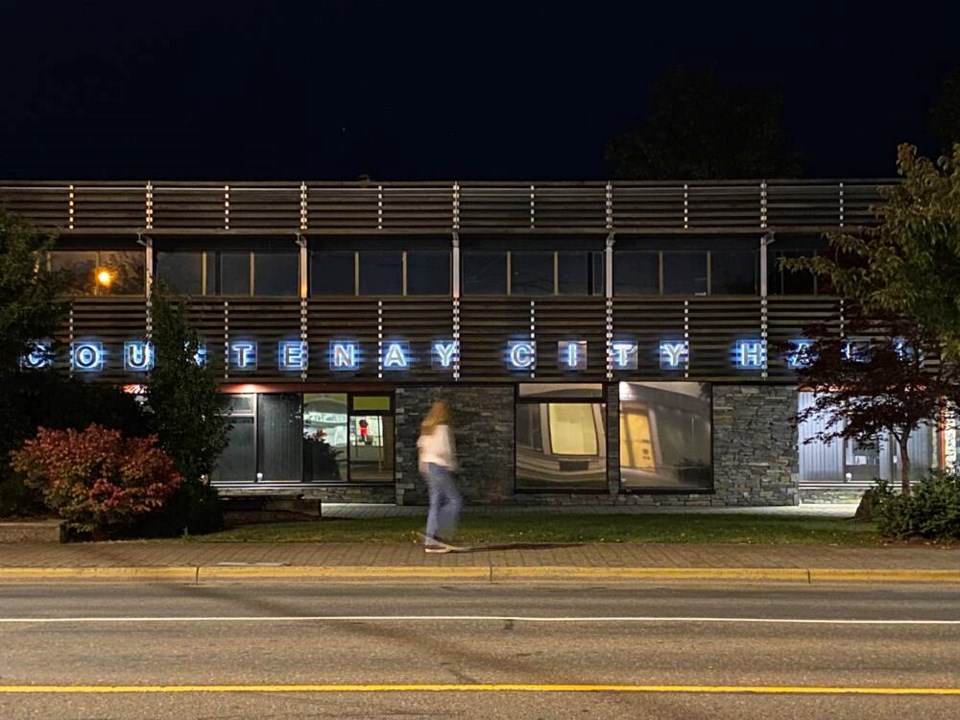Courtenay is establishing a city-wide air-monitoring system and launching a public awareness campaign to reduce harmful wood smoke pollution drifting through the mid-Island community.
“There has been a lot of dialogue about local air quality over the past few years,” Courtenay Mayor Bob Wells said in a statement. “These new monitors will help our community become more informed on the issue and identify particular areas that might be of increased concern where we can focus our resources on finding solutions.”
The public education effort for the city of 25,600 will be rolled out in coming weeks and 10 new air monitoring devices will be installed on public buildings.
Courtenay has been found to have some of the worst air quality in the province. Heat inversion in the city prohibits it from rising and dispersing, Wells said Friday.
“Literally, you see it come out of a chimney and back down again. So that’s the challenge.”
One problem is the lack of a certified dry wood supply, he said. Wet wood results in more smoke than dry.
Courtenay is the latest city to take on wood smoke, which is burned widely throughout the province, typically to heat homes.
Other areas such as Sooke, Cowichan Valley, Port Alberni and Gabriola Island have already installed air monitors.
The new monitors will allow the city to collect data on harmful fine particulate matter, called PM2.5, found in wood smoke.
Wood smoke can exacerbate asthma and chronic obstructive pulmonary disease and reduce lung function, and increase the risk of heart attack or stroke. Lower birthrates and ear and respiratory infections in children are also concerns.
Wood-burning appliances are not banned but owners are encouraged to upgrade them to more efficient models.
Wood stove advocates, including manufacturers and local members of the Hearth, Patio and Barbeque Association of Canada, recommend using dry wood only, ensuring the wood stove is properly maintained and upgrading.
B.C.’s Environment Ministry describes PM2.5 as “one of the most important outdoor air pollutants from a human health perspective.”
City council voted unanimously at its Feb. 8 meeting in favour of supporting the new air-monitoring network.
Courtenay is working with the school district to put monitoring devices on schools.
The system is low-cost, with a $7,000 price tag to buy and install and a $1,500 annual expense for repair and any needed replacement.
The city amended its public nuisance bylaw last fall to regulate high amounts of wood smoke drifting onto private or public property. Bylaw officers will talk to people first before considering penalities, hoping to convince them to comply, Wells said.
Courtenay also prohibits wood stoves being installed in new homes under rules passed previously.
Air monitoring in the city will tie in with an air-quality initiative at Comox Valley Regional District.
Jeanniene Tazzioli, Courtenay manager of engineering and environmental projects, said the area consistently had concentrations of fine particulate matter that exceed B.C. air quality objectives.
There is one provincial air-quality monitoring station in Courtenay. By adding more, the city will be able to see how PM2.5 levels vary across the city in space and time, Tazzioli told council.
Earlier research showed that there is a variation in the city, “but we don’t know to what extent,” she said. “So that’s what additional monitors could help us understand.”
Air quality is a concern, especially during winter, Tazzioli said.
Monitors recommended by the Ministry of Environment measure concentrations of PM2.5 in real time and upload them to an online map.
“So it makes the readings really accessible,” Tazzioli said. “Residents and members of the public can log on and see what the air monitors are reading in their area at any given time.”
Courtenay will be using PurpleAir brand monitors. Three similar privately owned monitors are already in place in the city.
They need an electrical connection and a wireless Internet connection as well as access for city staff.
Data will be uploaded to the PurpleAir map, which will show the locations and readings for the public and send information to a provincial data collection system at the University of B.C.
The collected information on the PurpleAir website will be slightly different from what’s shown on the provincial map because laser particle counters in monitors used by the city are sensitive to humidity. That will be accounted for so that correct numbers will go up on the provincial site.
• For information on wood smoke, air quality information and links to rebates to upgrade heating systems go to courtenay.ca/CleanAir.
>>> To comment on this article, write a letter to the editor: [email protected]



